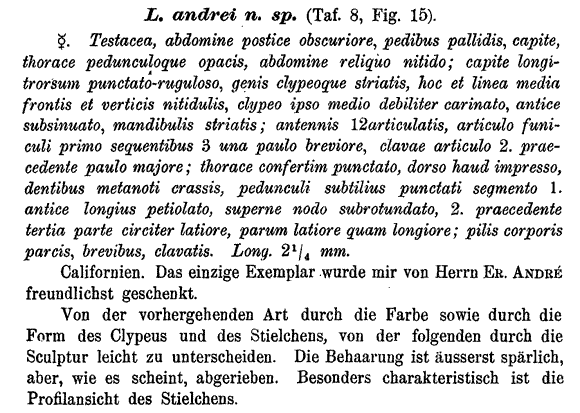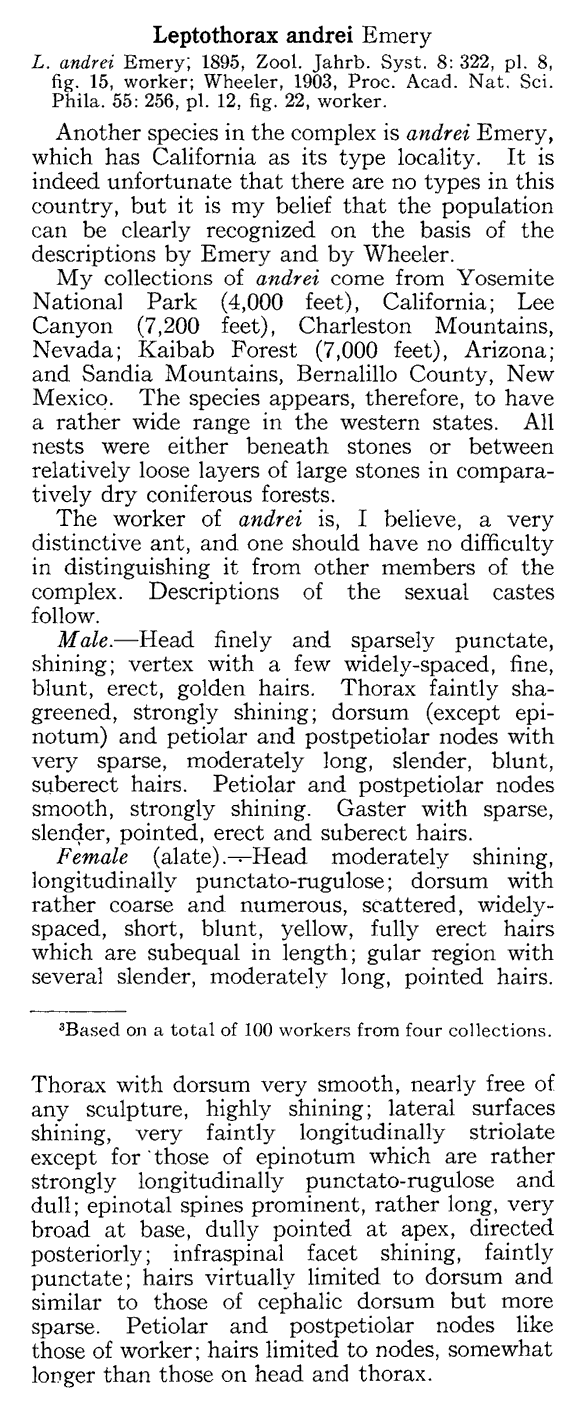- Identification
- Ants of the genus Temnothorax are small, with a head that is elongate relative to their mesosoma, and have an 11 or 12 segmented antenna that ends in a 3 segmented club. The mesosoma has no, or only minor, depressions along its dorsal surface and the propodeum either bears two small tooth-like projections or two true spines.
- Temnothorax andrei workers are small light yellow or brown ants that have a 12 segmented antenna, clavate erect hairs on the dorsal areas of the mesosoma and small tooth like spines on the dorso-posterior edge of the propodeum.
- Biology
- From Mackay (2000): Occurs in relatively dry coniferous forests, oak woodland, laurel forest, pinyon-juniper and cool deserts. Nests are small, usually less than 100 workers, and found under stones or in loose layers of large stones. Colonies have also been found living within Camponotus and Formica nests.
- Distribution
- Range
- United States and Mexico. California, Arizona, New Mexico, Baja California Norte
- Navajo Reservation Records
- Collection records being processed.
- Etymology
- Patronym. Named after the French myrmecologist, Ernst André, that supplied Emery with a worker of Temnothorax andrei.


- Literature
- Cole, A. C., Jr. 1958. North American Leptothorax of the nitens-carinatus complex (Hymenoptera: Formicidae). Annals of the Entomological Society of America. 51:535-538.
- Emery, C. 1895. Beiträge zur Kenntniss der nordamerikanischen Ameisenfauna. (Schluss). Zoologische Jahrbücher, Abteilung für Systematik, Geographie und Biologie der Tiere. 8:257-360.
- MacKay, W. P. 2000. A review of the New World ants of the subgenus Myrafant, (Genus Leptothorax) (Hymenoptera: Formicidae). Sociobiology. 36:265-444.
- A note about these publications. The literature cited here is not meant to be an exhaustive list of papers published about this species.
Page authored by David Lubertazzi and Gary Alpert


